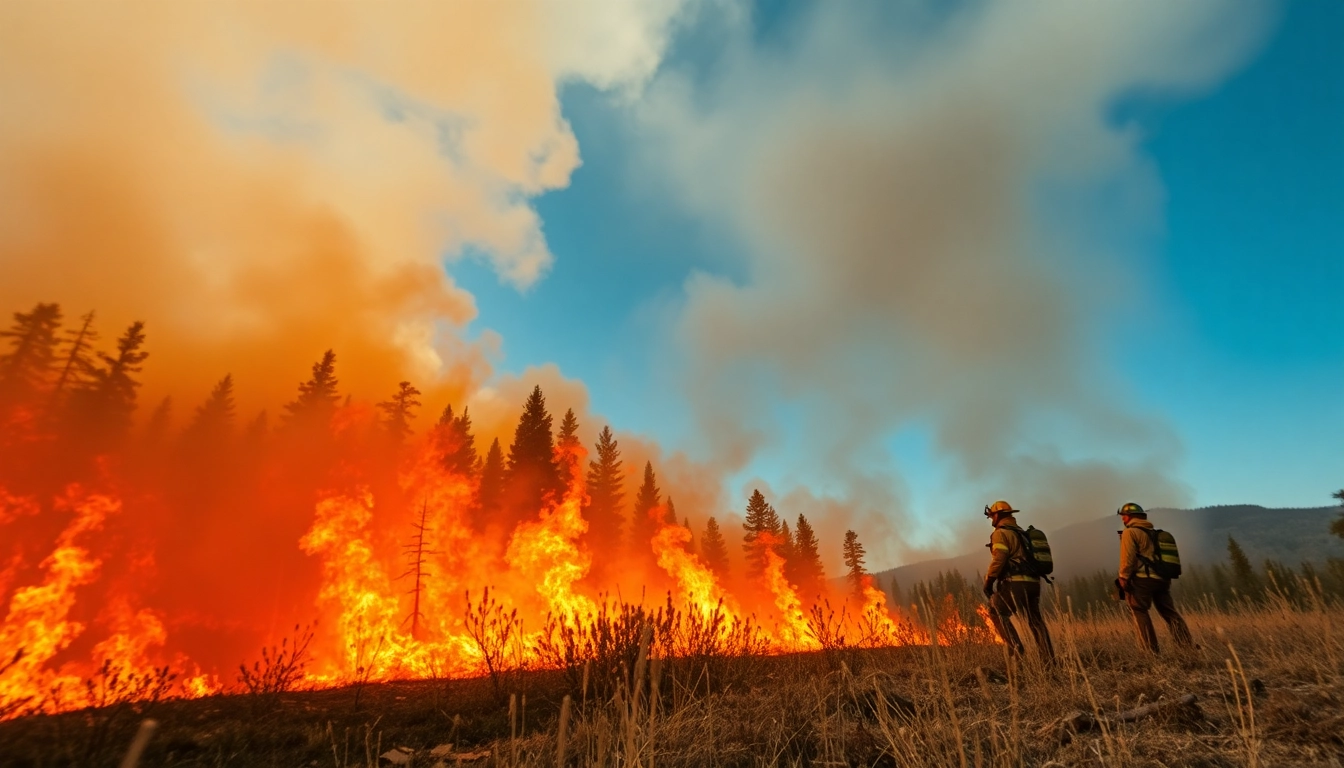Overview of Wildfire Events
What are Wildfire Events?
Wildfire events refer to uncontrolled fires that burn in forests, grasslands, and other natural areas. These events can vary greatly in size and intensity, sometimes spreading rapidly due to environmental conditions like wind and drought. Understanding the nature of wildfire events is crucial for proper management and prevention strategies. Wildfire events can be categorized into different types, including surface fires, ground fires, and crown fires, each with distinct behaviors and impacts.
The Causes and Contributors to Wildfire Events
Wildfire events are ignited by various natural and anthropogenic factors. The primary natural causes include lightning strikes and volcanic eruptions, while human activities such as discarded cigarette butts, campfires left unattended, and arson also contribute significantly to wildfire occurrences. Moreover, climate change has exacerbated conditions that lead to more frequent and intense wildfires, including prolonged drought periods, rising temperatures, and changing precipitation patterns.
Key Statistics on Wildfire Incidence
Understanding the scope of wildfire events can be highlighted through statistics. According to the National Interagency Fire Center, there were over 50,000 wildfires reported in the United States in 2022, burning approximately 7.6 million acres. Furthermore, the cost of wildfire suppression has increased dramatically, exceeding $3 billion annually on average, reflecting the growing threat and severity of these events.
Impact of Wildfire Events on Communities
Physical and Environmental Damage
Wildfire events can lead to significant physical and environmental damage. Forest ecosystems experience habitat loss, including devastating impacts on wildlife. Moreover, the loss of vegetation increases soil erosion and impacts water quality, leading to long-term ecological consequences. The aftermath of a wildfire often requires years, if not decades, for ecosystems to recover, highlighting the profound impact these events have on the environment.
Economic Effects of Wildfire Events
The economic repercussions of wildfire events are extensive. They include direct costs associated with firefighting operations, property loss, and infrastructure damage. In 2022, California alone suffered economic losses estimated at $23 billion due to wildfires. Local economies can be devastated when tourism, agriculture, and other businesses are impacted, leading to job losses and reduced tax revenues for regions affected by wildfires.
Long-term Community Resilience Strategies
Building resilience in communities prone to wildfires involves strategic planning and resource allocation. Local governments can implement zoning regulations and land-use planning to minimize the risk of wildfire damage. Community training programs, such as fire-safe landscaping workshops, can prepare residents to better protect their homes and property. Partnerships between local governments, NGOs, and the community are vital for fostering a culture of preparedness and resilience.
Management Strategies for Wildfire Events
Preventive Measures to Mitigate Risks
Effective management of wildfire events begins with prevention. Strategies include creating defensible spaces around homes, which involve clearing combustible materials from a certain radius. Controlled burns are another method used to reduce fuel loads in dense forest areas, helping to mitigate the risk of catastrophic wildfires. Public awareness campaigns can educate the community about fire dangers and safe practices to minimize human-caused ignitions.
Firefighting Techniques and Equipment
Firefighting techniques have evolved over the years, with the integration of modern technology playing a significant role. Firefighters use tools such as wildfire retardants, fire hoses, and aerial resources to combat wildfires. Moreover, advanced technologies for mapping and monitoring fire behavior, like infrared cameras and drones, allow for more efficient and strategic firefighting operations. Training and preparation are essential to ensure that firefighting teams are equipped to handle the complexities of wildfires effectively.
The Role of Community Outreach and Education
Community outreach and education are critical components in managing wildfire risk. Local organizations can facilitate workshops and drills that inform residents about fire behavior, evacuation routes, and emergency preparedness plans. Engaging the community through social media and local events can keep the public informed about upcoming wildfire season threats and response strategies. Empowering individuals with knowledge equips them to take an active role in protecting their homes and communities.
Recent Trends in Wildfire Events
Analysis of Recent Major Wildfires
Recent years have witnessed significant wildfire events that serve as case studies. The 2020 Australian bushfires, for instance, burned over 18 million hectares and resulted in the loss of numerous homes and the lives of wildlife in catastrophic numbers. Similarly, the 2021 California wildfires led to extensive property damage and prompted scrutiny regarding forest management practices and climate adaptation strategies. Analyzing these incidents allows communities and policymakers to identify what can be improved in future prevention and response efforts.
Emerging Technologies in Wildfire Detection
With the rise of technology, new methods for wildfire detection are emerging. Predictive modeling software that uses data analytics can assess fire risk, while satellite imagery and IoT sensors can provide real-time updates on fire conditions. The advancement of these technologies enhances early detection, offering responders more time to mitigate the impact of wildfires before they escalate into major incidents.
Climate Change Influence on Wildfire Frequency
Climate change is a significant accelerator of wildfire frequency and intensity. Research indicates that rising global temperatures contribute to more extreme weather patterns, leading to increased dry spells and intense lightning storms. For instance, California has seen its wildfire season extend, with drier conditions persisting for longer periods, highlighting the urgent need for policies that address climate resilience and adaptation strategies.
Preparing for Future Wildfire Events
Emergency Preparedness Plans for Residents
Community emergency preparedness plans should be comprehensive, outlining evacuation routes and creating communication channels during wildfires. Residents should have go-bags ready with essential supplies, medications, and important documents. Simulated evacuation drills can also prepare communities for a swift response in a real emergency, increasing overall community resilience against wildfire events.
Governmental and Organizational Support
Support from government and non-profit organizations is vital for fostering wildfire preparedness and response efforts. Agencies may provide funding for wildfire risk assessments, training programs, and technology grants to upgrade firefighting resources. Collaboration between local, state, and federal entities can create a cohesive approach to wildland fire management and community safety.
Resources for Staying Informed About Wildfire Events
Staying informed about wildfire risks and preparedness resources can significantly reduce vulnerability. Residents can utilize platforms like the National Interagency Fire Center to track wildfires and receive updates. Local authorities may also provide alerts and information through community bulletins or social media channels. Further, organizations such as the Fire Awareness Network offer resources to enable communities to prepare for and respond to wildfires more effectively.










Leave a Reply